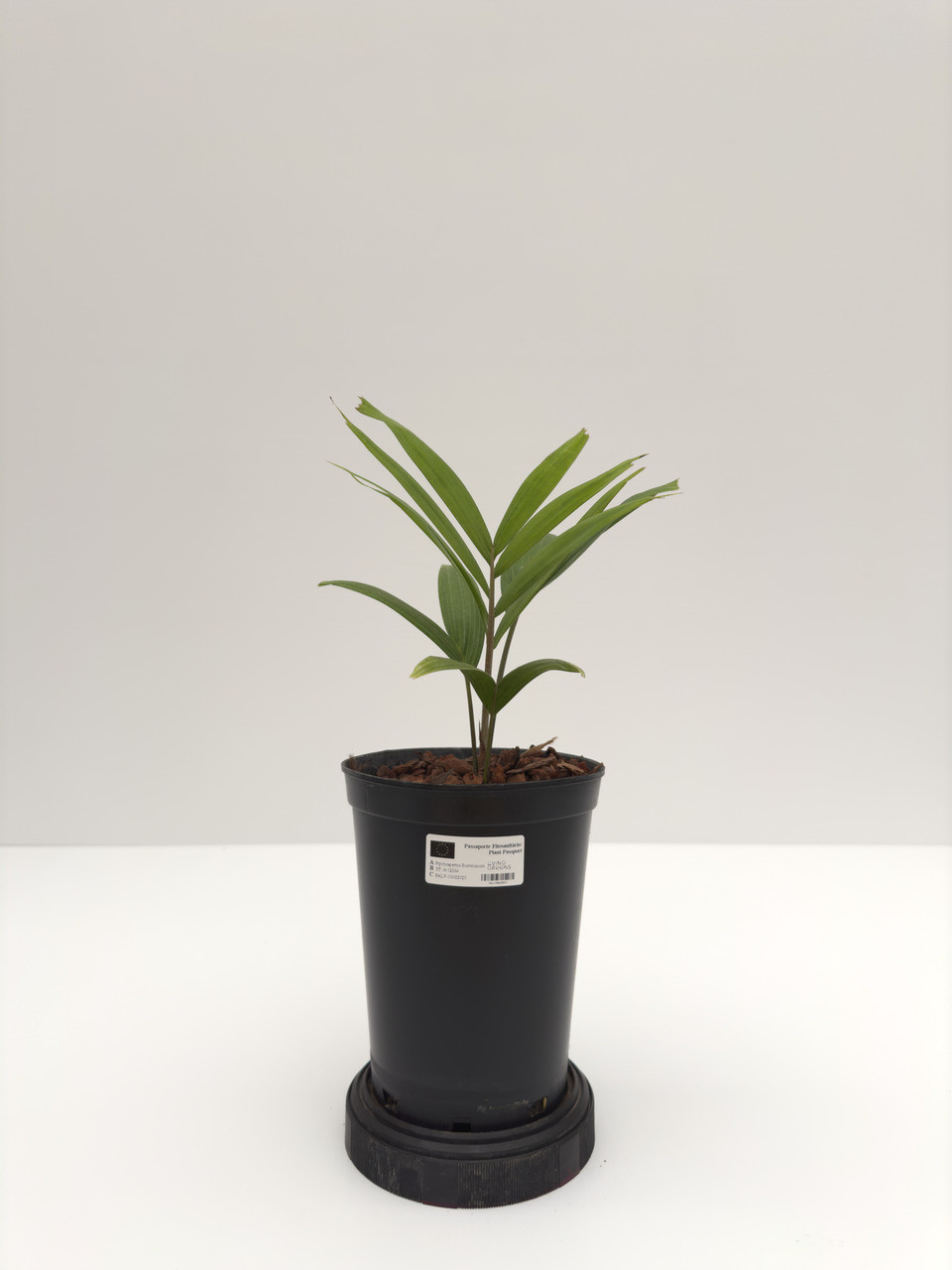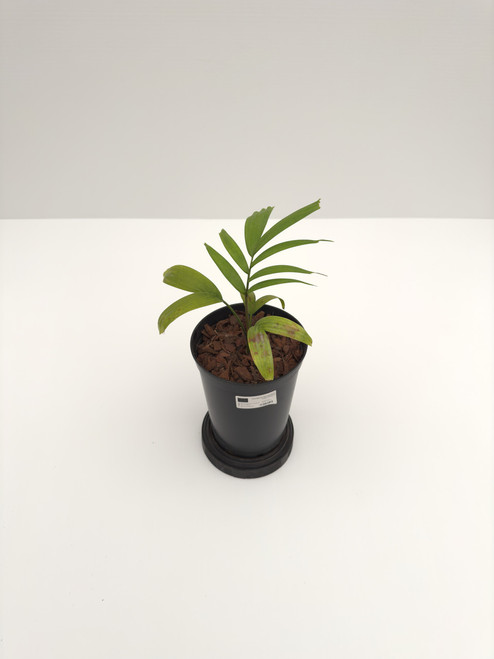Product Description
Habitat and Distribution
Endemic to New Guinea.
Description
Small to medium sized clustering palm, with slender stems to about 8 m. (49 ft.) tall. Stems to about 5 cm in diam. (2 in.) breast high, 8-10 leaves in the crown. New leaf coppery red. Leaf to about 200 cm long. Prophyll splitting and dehiscing on upper side of inflorescence. Peduncular bract splitting and dehiscing on lower side. Inflorescence axes red. Editing by edric.
Culture
Warm, sheltered and moist. Prefers warm sub-tropical or tropical conditions.
Comments and Curiosities
"Don't be fooled by the single stem vs clustering to differentiate P. waitianum from P. burretianum - you need to use other criteria for differentiation. P. waitianum can be either single stem or clustering!" (Dr. George Peavy)
"Attractive tightly clumping species from New Guinea, each stem about 1-2" in diameter. Leaves about 5-6' long and leaflets have a very jagged, uneven, premorse tip. New leaves are an ornamental pink to maroon color. This species is doing OK in zones 10a in southern California, but failed in my old garden in zone 9b (winter easily killed it off). Many palms I saw in Hawaii identified as Ptychosperma waitianum were probably this palm, as the two are very similar in appearance, except the latter is very often a solitary palm, not always a clustering one like this one... most of those P. waitianums I saw were clustering as well." (Geoff Stein)
A beautiful, small species from rainforests in New Guinea that grows clustering, slender trunks to about 5 m (16 ft.) tall. The leaflets are distinctly fishtail-shaped. A particularly attractive feature of this palm is the dark red emergent leaves. (RPS.com)



















